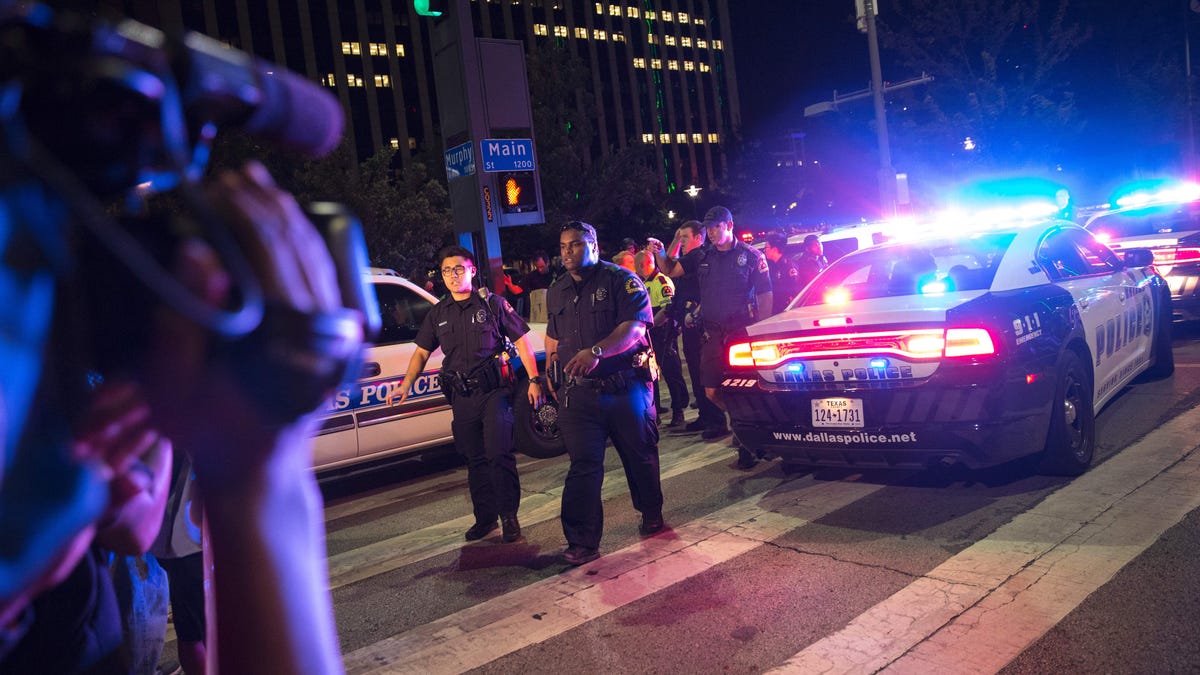Dallas shooter killed by bomb-equipped robot in first for law enforcement
Dallas' chief of police says his department rigged an explosive device to a robot to take out a suspect. "Other options would have exposed our officers to great danger," he says.

In what is believed to be a first, a US law enforcement agency has used a robot to kill a suspect.
The move followed Thursday night's sniper attack that killed five Dallas police officers and left seven others wounded during a protest over this week's shootings of two black men by police officers in Louisiana and Minnesota.
At a press conference Friday morning, Dallas Police Chief David Brown told reporters that police cornered a suspect, identified by The New York Times as Army veteran Micah X. Johnson, 25, on the second floor of a community college building in downtown Dallas.
When hours of negotiations with the suspect broke down, Brown said gunfire was exchanged and "we saw no other option but to use our bomb robot and place a device on its extension for it to detonate where the suspect was. Other options would have exposed our officers to great danger. The suspect is deceased as a result of detonating the bomb."
The police chief's account contradicts earlier reports that the suspect killed himself. According to Brown, the suspect said that he was upset about shootings across the country and that he hated white people and wanted to kill them, especially white officers.
The Dallas shooting, which followed what had been a largely peaceful protest, has inflamed an already tense nation grappling with issues of race relations and law enforcement's use of lethal force. Outrage over the treatment of blacks by police peaked once again this week following two widely circulated videos -- one showing the aftermath of a police shooting of Minnesota driver Philando Castile, the other showing the shooting death of street vendor Alton Sterling in Baton Rouge, Louisiana.
Shortly after the press conference, Peter Singer, an author and strategist at the think tank New America and an expert on technology and defense issues, tweeted that Dallas police officers were the first to use a robot in this way. Insurgents and coalition troops in Iraq have used or attempted to use robots in a similar fashion.
The robot may have been something like this MARCbot, used by NASA and the US military.
Singer noted that both in Iraq and in Dallas, the robots used with intent to kill were not designed for such a purpose, but rather were "jury rigged" to become a weapon.
Experts like Singer suspect that it was either a MARCbot, which is a small robot initially developed by NASA and later used by the military in Iraq and Afghanistan, or a surveillance robot like those that the Dallas PD has used in the past.
The Dallas police previously employed a "bomb robot," as described by Brown, in the aftermath of a shooting at the police headquarters last year. In that case, robots were both used to safely deal with bombs planted by suspects and also to investigate scenes with a surveillance bot armed with a video camera. It's possible that one of the bots used in that case was responsible for delivering the bomb that killed Johnson given that both are described as "bomb robots" by the department.
While it does appear to be the first time a police robot has killed anyone in the United States, robots have been used for other nonlethal offensive actions in recent years. In 2014, for example, Albuquerque Police used a robot to deploy "chemical munitions" into a motel room where a suspect was holed up to force the suspect to surrender.
Rigging a bomb to a robot designed for other things isn't exactly Robocop or Skynet, but it still raises a slew of new questions for the future of law enforcement. Security researcher Matt Blaze, who directs the Distributed Systems Lab at the University of Pennsylvania, tweeted one such concern, regarding how an armed robot could be controlled and secured:
"I've seen police robots controlled by cables, but also (analog, unsecured) wireless links," Blaze added.
It's unknown at this point how the robot used in Dallas was handled. The Dallas Police Department did not immediately respond to a request for comment.

